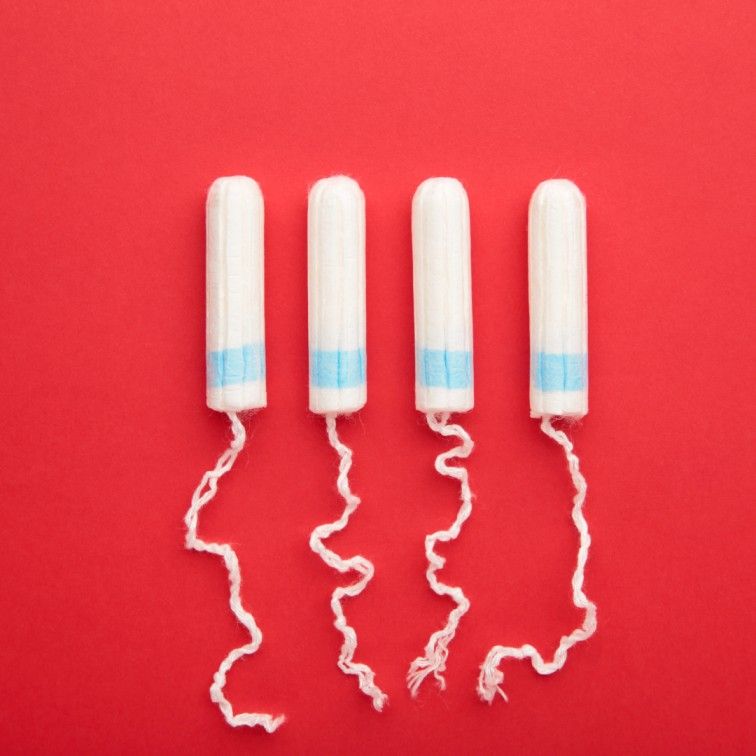New chemical testing study finds toxic heavy metals in tampons
 |
| Alex Scranton Director of Science & Research at WVE |
New chemical testing study finds toxic heavy metals in tampons
Odd as it may sound, we were thrilled to see this new study on toxic heavy metals in tampons! It is exciting to see interest among more researchers looking more closely at the kinds of chemical exposures tampons and other menstrual products can have on the body. It is an important and groundbreaking study that deserves a lot of attention. But as with other chemical testing studies we have seen, this one also raises many more questions than it answers!
Why this study is important:
It is the first time anyone has published testing data on toxic heavy metals in tampons (or in any kind of menstrual product.). The heavy metals they found included lead, arsenic, chromium, zinc and more. Every tampon they tested had detectable levels of at least 5 metals, but the levels varied widely from product to product. None of these chemicals were listed as ingredients on any of the packages, meaning they may be incorporated into other listed ingredients, they may be contaminants introduced somewhere along the supply chain, or they may have been intentionally added but not disclosed. Whatever the reason, the fact that they were not listed with ingredients means they are difficult to avoid.
What does this mean for the health of tampon users?
This is what everyone wants to know – but which we frustratingly don’t have a good answer for. Heavy metal contamination today is unfortunately pretty common – these chemicals have been found in food, drinking water, cosmetics, toys, etc. This is just the first time we have heard that tampons contain these toxic chemicals too. But tampon use is different – it represents a unique route of exposure to a very sensitive, intimate and absorptive part of the body. Vaginal and vulvar exposure to chemicals can significantly impact our reproductive health. But this is all woefully understudied. There just isn’t enough current research to help us understand what the health implications might truly be.
So what can tampon users do with this information?
Unfortunately, the study did not reveal the names of the brands they tested, so it can’t tell us which products are better than others. The researchers did look at factors such as organic vs. non-organic, super vs. regular, US vs. international, plastic applicator vs. cardboard or no applicator. But there weren’t clear trends from the data. For example, organic tampons had lower levels of some metals, but higher levels of others. And of course – this study only looked at heavy metals – and was not able to take into account other types of problematic chemicals often found in these products, such as phthalates or VOCs. For the most part, the heavy metals levels that were detected in this study were pretty low – but any contamination of this kind should be considered unacceptable.
So what can you do?
- Keep talking about this issue! The importance of a study like this is that it brings attention to the problem of toxic chemicals in menstrual products – an issue that has been swept under the carpet for far too long. Contact manufacturers of the products you use to ask them what they are doing to ensure your health and safety. Consumers’ voices are the most powerful tool we have to create change towards safer products in the future. (And how well companies respond to your questions can also tell you a lot about whether or not to trust them!)
- Think critically about the menstrual products you use and how they make you feel – and try something different. You are the best judge for what works best for your body and lifestyle. Many of us are simply used to being miserable for 3-5 days every month and continue using what we have always used out of habit. Try out a different brand and see if your experience improves. Changing up your menstrual management can also include trying menstrual cups, discs, period underwear, reusable cloth pads, or free bleeding.
- Look for simpler products that work for you. Reading the ingredients label on your menstrual product can tell you a lot – even if you aren’t familiar with all the ingredients listed. A longer list of ingredients means a more complex chemical exposure. (Some of those ingredients are likely just fine, but we simply don’t have the research to know about all of them – so simpler can be better.)
- Share this information with your friends and family. Again – the more we talk about these issues, the sooner we can make change happen.



